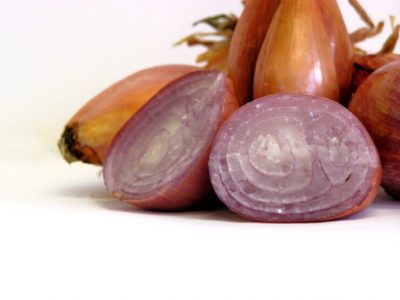Shallots are a variety of onion that originated in Asia thousands of years ago. Now, the different types of onions are collectively the widest-cultivated species of the the genus Allium (yes, this the same genus as garlic! They’re very closely related). Onions are cultivated around the world because of their diversity and unique flavor; we all know that the different varieties of onion represent slightly different flavor profiles, with shallots being sweeter and red onions being sharper. Historically, they have been used for at least 5000 years (but those were probably wild rather than cultivated). Since onions are so easily grown and then stored, they were a staple food in their native lands for many years; one example is that workers who built the Egyptian pyramids seem to have lived off of stipends of radishes and onions.
Onions are about 89% water (like a lot of vegetables) and have negligible macronutrients. In general, onions are best used to add interesting flavor to dishes, as they only have small to trace amounts of the vitamins and minerals. It turns out that all of the varieties of onions (shallots, white, yellow, red especially) differ both in taste and in polyphenol content! Shallots have the highest amount, with six times more than vidalia; yellow onions have the highest flavonoid content; and red onions have the highest anthocyanins (that is actually part of the red pigmentation). So, including a variety of onion types in your diet is a great way to maximize the amount of phytonutrients you get (there is tons of additional information in the post, The Amazing World of Plant Phytochemicals: Why a diet rich in veggies is so important!).
Shallots are available at almost any grocery store. Onions were identified as being one of Environmental Working Group’s Clean 15, so we don’t need to bend over backwards to get organic.


 Pork Shoulder
Pork Shoulder